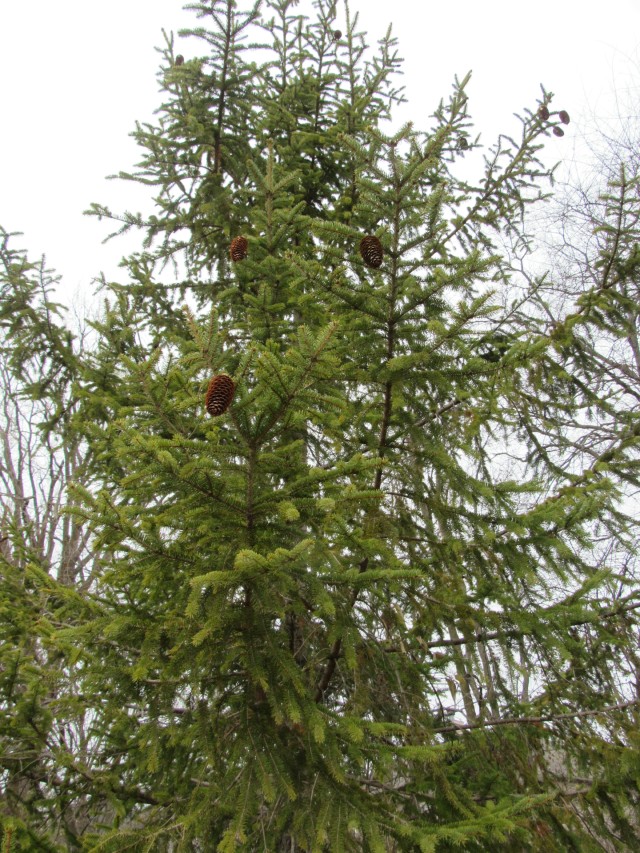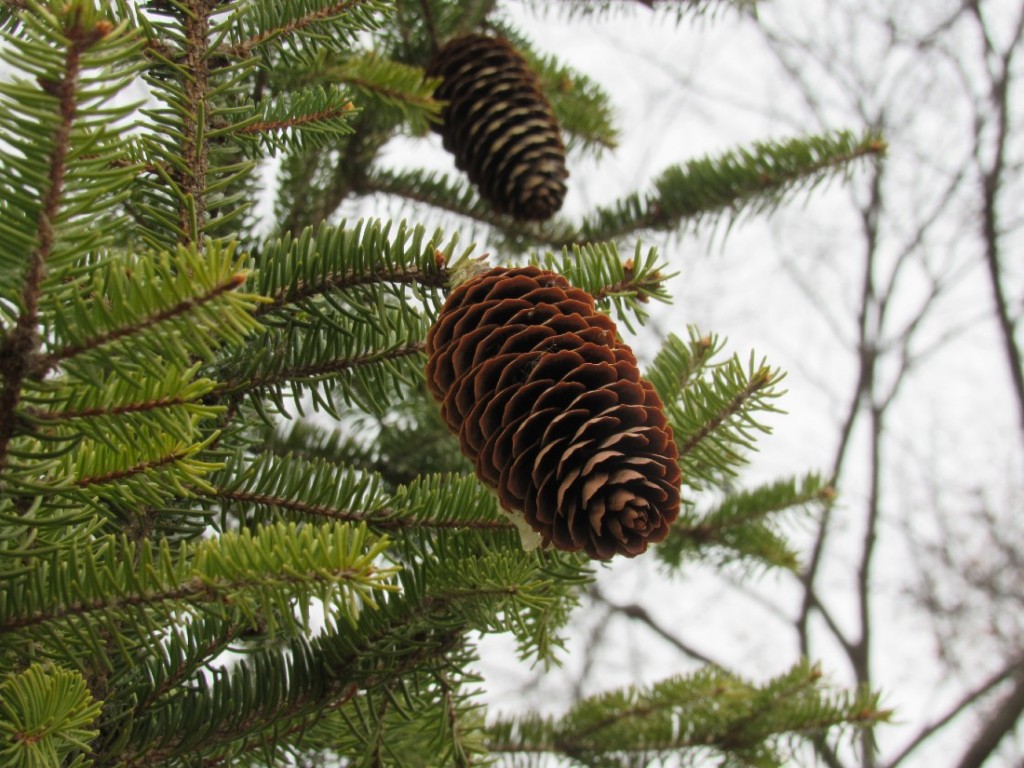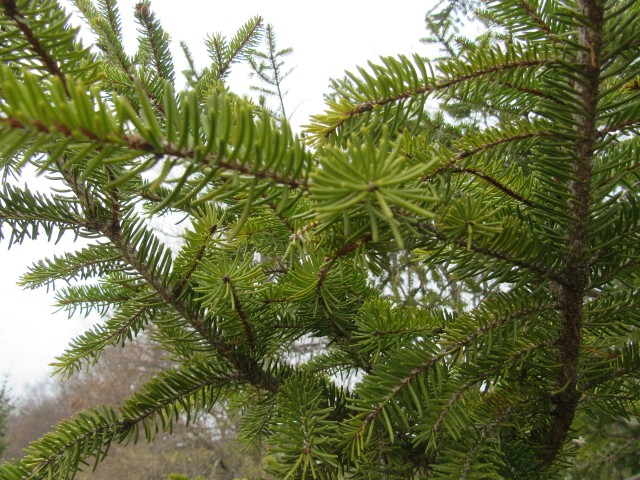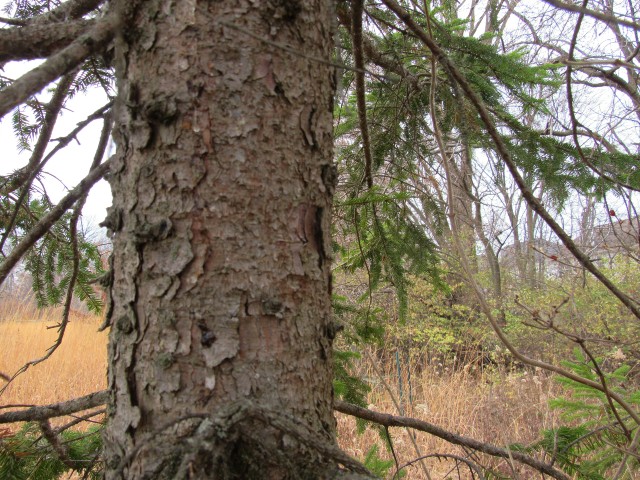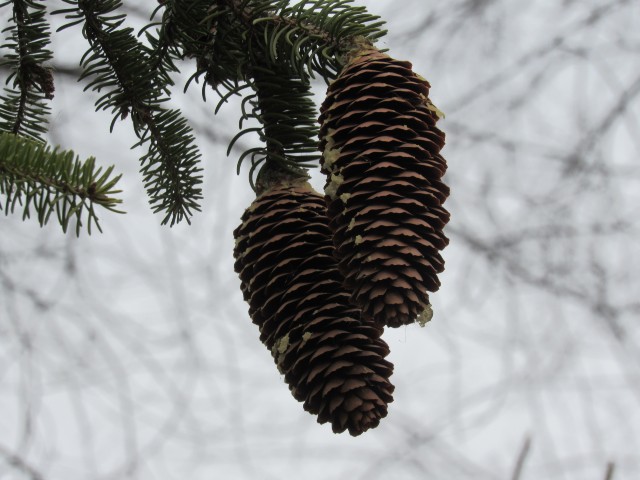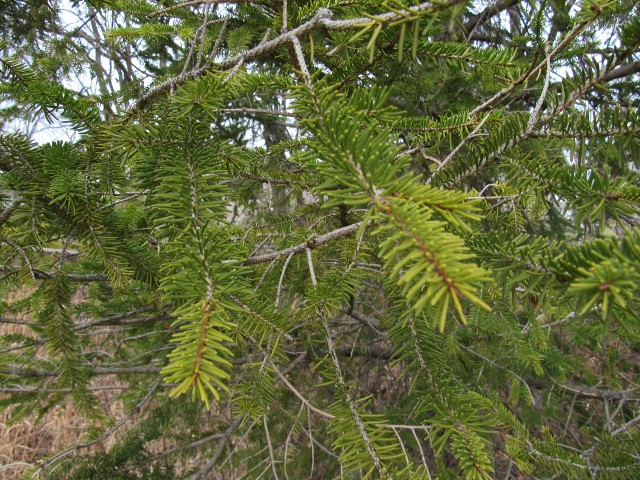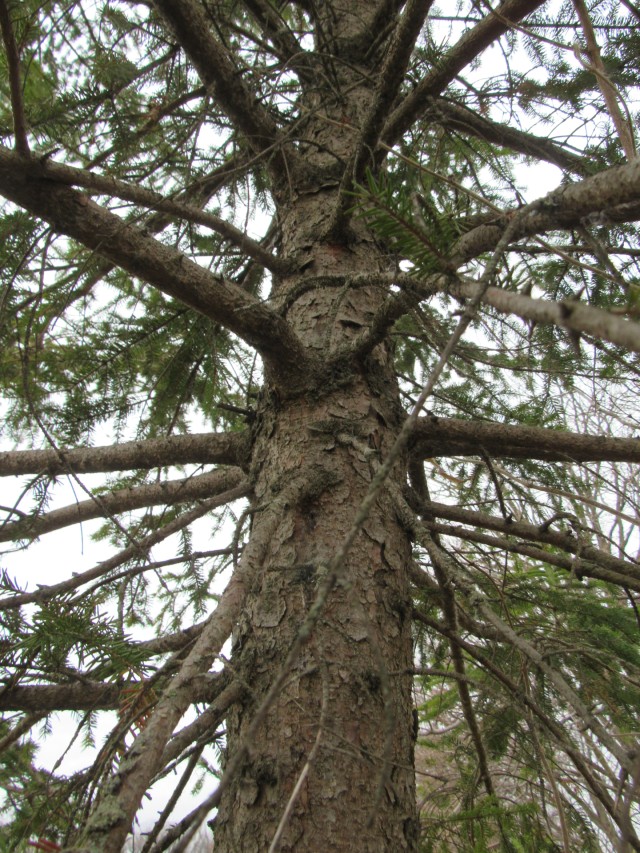While visiting Indiana I came across this tree which I have never encountered before. Its seed cone is longer than wide, with woody scales attached at the base. White Spruce has the smallest cones of any of the spruces. They are typically 1 to 2 inches long, cylindrical and pendulous, often clustered near the top of the tree.
White Spruce hails from northern climes and is one of the first tree species to colonize after glaciers recede. This evergreen usually grows to heights of 50 to 100 feet. This species is the northernmost tree species in North America, reaching just north of 69°N latitude in Canada’s Mackenzie River delta.
The pale green, pointed evergreen needles are 1/2 to 3/4 inch long. They are four-sided, often crowded on the upper surface of the stem. The aromatic needles can persist for three to four years before dropping. Scientifically known as Picea glauca, the waxy coating on its needles gives them a blue-green (glaucous) appearance, hence the Latin species name.
This tree adapts to a surprising variety of environments and climates. It prefers moist, well-drained alluvial soil, but grows on a wide diversity of sites. White Spruce is rarely found in pure stands.
White Spruce is the most commercially important timber species in the far north woods. Almost white, its wood is soft, light-weight, and moderately strong with a straight grain. It is used for wood fiber, house logs, and musical instruments.
Its bark is thin and scaly, flaking off in small circular plates 2 to 4 inches across. This tree was an important fuel source for early colonists and Native Americans of the north woods. In addition to human use, this tree provides cover for Moose, Martens and Lynx.
White Spruce has been the most popular selection for the U.S. Capitol Christmas tree, being used 13 times (as of 2020) since the tradition began in 1964.

